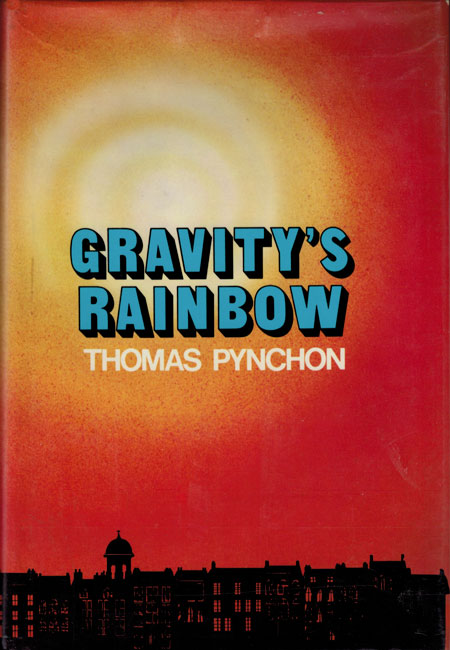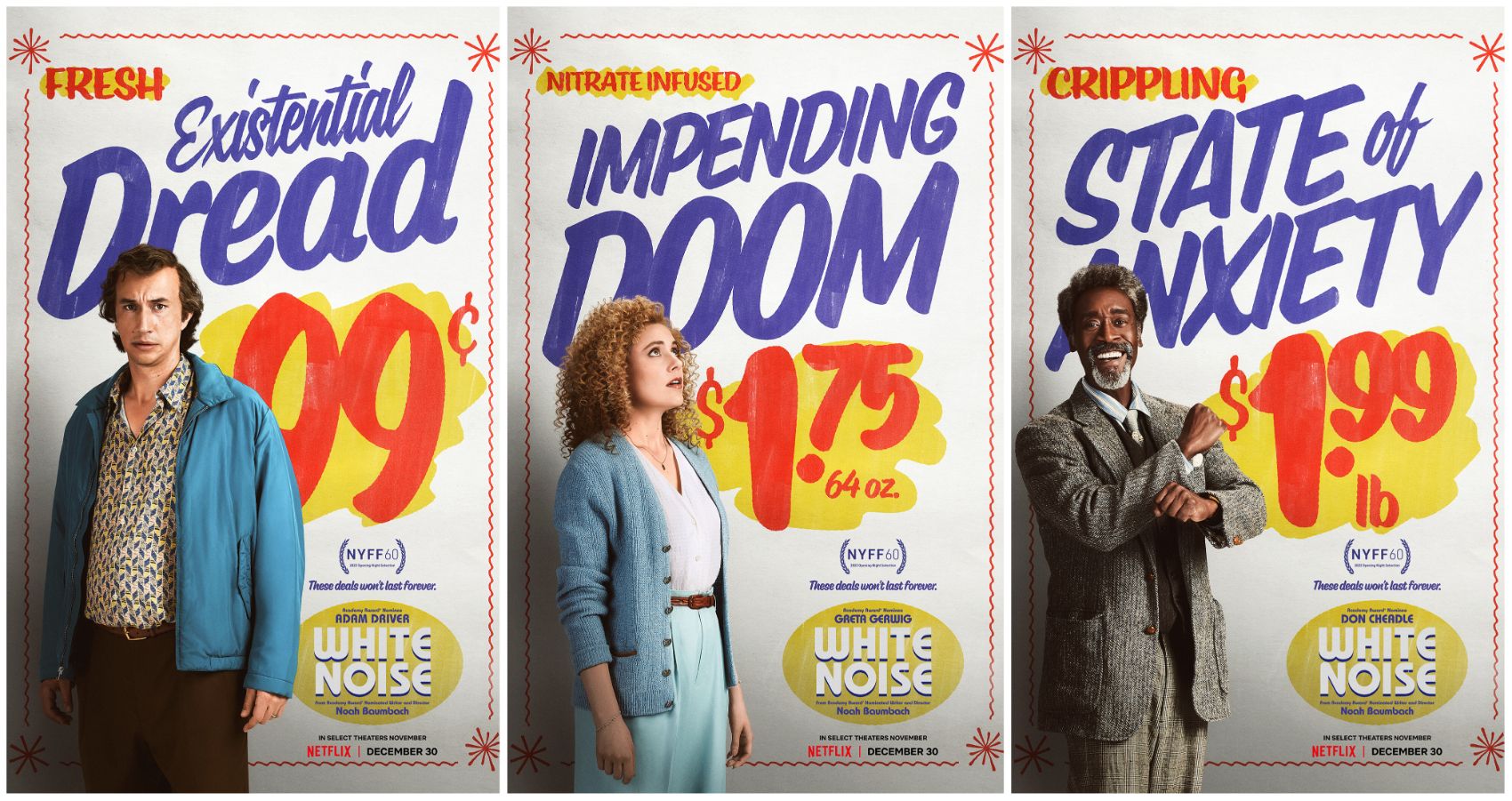by Thomas Pynchon (1973)

2023 reads, 12/12:
Thirty years ago, Martin Scorsese published an opinion piece in the New York Times, defending filmmakers, authors, and other artists whose “style gets in the way of [their] storytelling.” While this piece was mainly a rebuttal to an opinion piece on Federico Fellini, Scorsese lists Thomas Pynchon as one such artist who falls under this category. And after spending almost 50 hours with Gravity’s Rainbow, I’m here to say I agree and appreciate his defense.
I’ve ventured into Pynchon’s work before with The Crying of Lot 49 and Inherent Vice, and I loved them both, so it only made sense that I attempt Gravity’s Rainbow, in its 50th year of publication. Continuing Pynchon’s setting of alternative histories, this book takes place at the end of World War II in an alternate, dream-like, paranoid version of the European theatre.
“He sits tonight by his driftwood fire in the cellar of the onion-topped Nikolaikirche, listening to the sea. Stars hang among the spaces of the great Wheel, precarious to him as candles and goodnight cigarettes.”
The first part of the book, “Beyond the Zero,” was the most difficult to me. Pynchon loves to invoke hysteron proteron (Greek: “later earlier”) at all scales in this book, but mainly in this first section. Individual phrases, sentences, paragraphs, and whole chapters are succumbed to this reversal in time: effect first, cause later. It’s even posed within the first few pages: “Screaming holds across the sky. When it comes, will it come in darkness, or will it bring its own light? Will the light come before or after?”
Pieces start to come together as you read, with connections being made right up to the end. Passages will run off track (example: the introduction of main character Katje, and then immediately being whisked back to the time of her ancestor and learning how he eradicated the dodo birds whilst envisioning them coming together and converting to Christianity). Its twists and turns aren’t for everybody, but everything is written for a reason. As I mentioned in my TCoL49 review, he writes how we think, re-experiencing whole memories in seconds.
“Connection? Of course there’s one. But we don’t talk about it.”
And that’s not to say that GR isn’t slightly prophetic as well. About 200 pages in, starting from the beginning of Part 2, the plot starts to kick in, and we find ourselves on cartoon-like cat-and-mouse chase throughout Parts 2 and 3. Along with control, themes such as War & technology, using The Rocket as a motif, constantly emerge. Pynchon’s books all have some inkling of paranoia as well, himself being a paranoid (you can count on one hand the number of photographs of him out there).
“...what do you think, it’s a children’s story? There aren’t any. The children are away dreaming, but the Empire has no place for dreams and it’s Adults Only in here tonight, here in this refuge with the lamps burning deep, in pre-Cambrian exhalation, savory as food cooking, heavy as soot. And 60 miles up the rockets hanging the measureless instant over the black North Sea before the fall, ever faster, to orange heat, Christmas star, in helpless plunge to Earth.”
Almost every sentence in GR has some reference to some historical event, person or slang that I’ve never heard of. Through reading I’ve learned about the Herero and Namaqua genocides, Kabbalist traditions, the Peenemunde slave camp, the Phoebus cartel (all historically factual, and some of which should have been taught in school) – all while reading actual rocket science. But this is not a textbook, there is a plot to be found here, with jokes and heartwarming moments as well.
“What are the stars but points in the body of God where we insert the healing needles of our terror and longing?”
But you don’t need to get every reference to have fun, and I wouldn’t have read this if it wasn’t enjoyable. I’m nowhere near a WWII history buff, and I never will be, but this was fun and even hilarious at times (examples: Pirate’s banana breakfast, Slothrop’s stream-of-consciousness trip down a toilet looking for his harmonica, and Snake, the unpredictably homicidal horse being paid off to not appear in the US rodeo circuits). His style does not hinder what he is trying to say, I actually think it helps. It’s the mini-episodes make this book fun, it’s the math and physics jokes that make this book enjoyable, it’s the literary acid trips (especially in Part 4) that make this book thought-provoking, and it’s the commentary on politics, War, and control that make this book worth it. His prose is like no other – upon finishing the book the realization hit that I may never read something like it again.
“Most people’s lives have ups and downs that are relatively gradual, a sinuous curve with first derivatives at every point. They’re the ones who never get struck by lightning. No real idea of cataclysm at all. But the ones who do get hit experience a singular point, a discontinuity in the curve of life—do you know what the time rate of change is at a cusp? Infinity, that’s what! A-and right across the point, it’s minus infinity! How’s that for sudden change, eh?”
I’m not sure whether this review has convinced or deterred you, but if you fall in the former camp, the best pieces of advice I have are (1) borrow the eBook from your library (likely no one else is reading it, lol) and read on a Kindle for quick Wikipedia lookups and German translations, (2) read this guide after every chapter to recall the important plot points, and (3) just let your imagination run wild with him. But if this book doesn’t sound like your cup of tea, and you’ve made it to the end of this review, then at least read possibly my favorite quote of the whole book:
“They have found a house in the stay-away zone, under the barrage balloons south of London. The town, evacuated in ’40, is still “regulated”—still on the Ministry’s list. Roger and Jessica occupy the place illegally, in a defiance they can never measure unless they’re caught. Jessica has brought an old doll, seashells, her aunt’s grip filled with lace knickers and silk stockings. Roger’s managed to scare up a few chickens to nest in the empty garage. Whenever they meet here, one always remembers to bring a fresh flower or two. The nights are filled with explosion and motor transport, and wind that brings them up over the downs a last smack of the sea. Day begins with a hot cup and a cigarette over a little table with a weak leg that Roger has repaired, provisionally, with brown twine. There’s never much talk but touches and looks, smiles together, curses for parting. It is marginal, hungry, chilly—most times they’re too paranoid to risk a fire—but it’s something they want to keep, so much that to keep it they will take on more than propaganda has ever asked them for. They are in love. Fuck the war.”
#readingyear2023 #american #physicallyowned #wtf #pynchon










